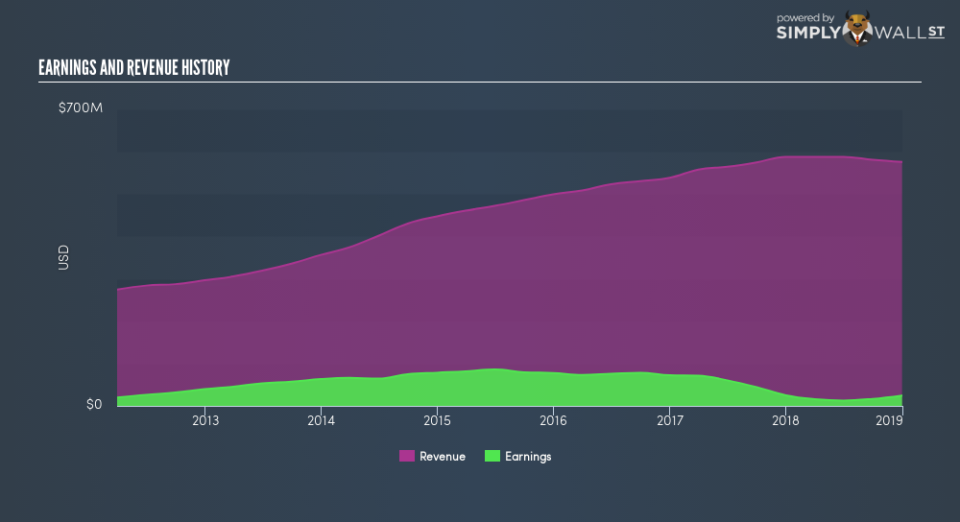Before You Buy Caesarstone Ltd. (NASDAQ:CSTE), Consider Its Volatility

Want to participate in a short research study? Help shape the future of investing tools and receive a $20 prize!
If you own shares in Caesarstone Ltd. (NASDAQ:CSTE) then it’s worth thinking about how it contributes to the volatility of your portfolio, overall. In finance, Beta is a measure of volatility. Modern finance theory considers volatility to be a measure of risk, and there are two main types of price volatility. The first type is company specific volatility. Investors use diversification across uncorrelated stocks to reduce this kind of price volatility across the portfolio. The other type, which cannot be diversified away, is the volatility of the entire market. Every stock in the market is exposed to this volatility, which is linked to the fact that stocks prices are correlated in an efficient market.
Some stocks are more sensitive to general market forces than others. Some investors use beta as a measure of how much a certain stock is impacted by market risk (volatility). While we should keep in mind that Warren Buffett has cautioned that ‘Volatility is far from synonymous with risk’, beta is still a useful factor to consider. To make good use of it you must first know that the beta of the overall market is one. A stock with a beta greater than one is more sensitive to broader market movements than a stock with a beta of less than one.
View our latest analysis for Caesarstone
What does CSTE’s beta value mean to investors?
Given that it has a beta of 1.85, we can surmise that the Caesarstone share price has been fairly sensitive to market volatility (over the last 5 years). Based on this history, investors should be aware that Caesarstone are likely to rise strongly in times of greed, but sell off in times of fear. Share price volatility is well worth considering, but most long term investors consider the history of revenue and earnings growth to be more important. Take a look at how Caesarstone fares in that regard, below.
Could CSTE’s size cause it to be more volatile?
Caesarstone is a small company, but not tiny and little known. It has a market capitalisation of US$592m, which means it would be on the radar of intstitutional investors. It has a relatively high beta, which is not unusual among small-cap stocks. Because it takes less capital to move the share price of a smaller company, actively traded small-cap stocks often have a higher beta that a similar large-cap stock.
What this means for you:
Beta only tells us that the Caesarstone share price is sensitive to broader market movements. This could indicate that it is a high growth company, or is heavily influenced by sentiment because it is speculative. Alternatively, it could have operating leverage in its business model. Ultimately, beta is an interesting metric, but there’s plenty more to learn. This article aims to educate investors about beta values, but it’s well worth looking at important company-specific fundamentals such as Caesarstone’s financial health and performance track record. I urge you to continue your research by taking a look at the following:
Future Outlook: What are well-informed industry analysts predicting for CSTE’s future growth? Take a look at our free research report of analyst consensus for CSTE’s outlook.
Past Track Record: Has CSTE been consistently performing well irrespective of the ups and downs in the market? Go into more detail in the past performance analysis and take a look at the free visual representations of CSTE’s historicals for more clarity.
Other Interesting Stocks: It’s worth checking to see how CSTE measures up against other companies on valuation. You could start with this free list of prospective options.
We aim to bring you long-term focused research analysis driven by fundamental data. Note that our analysis may not factor in the latest price-sensitive company announcements or qualitative material.
If you spot an error that warrants correction, please contact the editor at editorial-team@simplywallst.com. This article by Simply Wall St is general in nature. It does not constitute a recommendation to buy or sell any stock, and does not take account of your objectives, or your financial situation. Simply Wall St has no position in the stocks mentioned. On rare occasion, data errors may occur. Thank you for reading.

 Yahoo Finance
Yahoo Finance 
